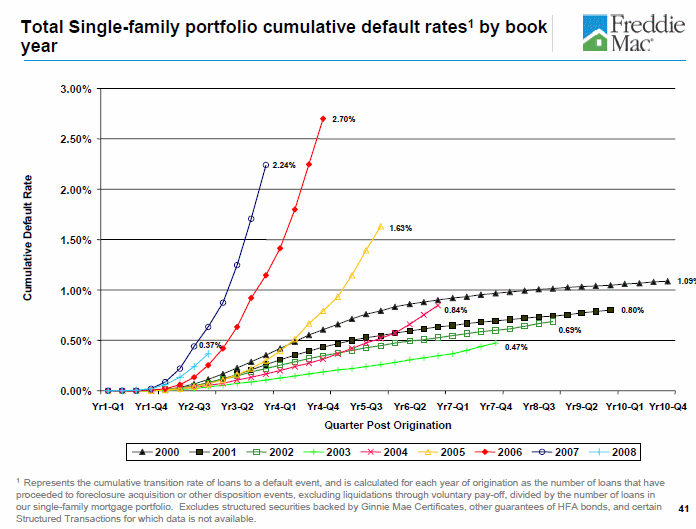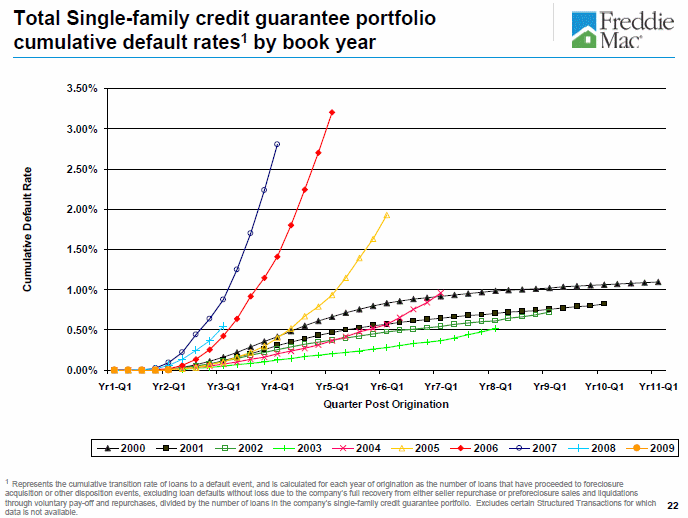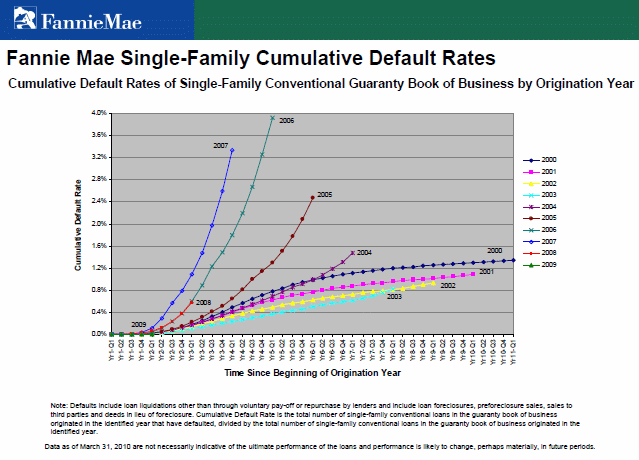Every quarter, Fannie Mae and Freddie Mac release a chart depicting the cumulative default rates by origination year. This chart is usually hidden in the middle of the presentation, but it provides a tremendous amount of information about what’s happening in the US housing market. Below is the cumulative default rate chart from Freddie Mac at year end 2009:
What we see in the chart above is the quarter by quarter progression of defaults for single-family home loans, organized by origination year. For example, the red line shows what percent of Freddie Mac’s portfolio of loans originated in 2006 have defaulted. The slope of the line indicates the rate at which loans are defaulting. Loans from 2000 didn’t perform particularly well because they were issued at a time when people were overly optimistic about the economy and/or their future incomes. Loans in 2001, 2002, 2003, and 2004 performed better. But one thing that became noticeable last quarter was an uptick in the defaults on loans of 2002-2004 vintages. Previously, it was the loans originated in 2005, 2006, and 2007 that were causing the most trouble. Now we have to keep our eye on the older vintages as well.
While the chart above is from year end 2009, the chart below shows where we were at the end of the first quarter. There appears to have been an uptick in 2001-2002 vintage defaults, implying that homeowners who purchased their homes in relatively normal economic times are defaulting at an increased rate. This is occurring even after the weakest borrowers have already defaulted (or refinanced and therefore excluded from the pool) in the first five years.
And the Freddie data compares favorably to the Fannie Mae data released today which shows a more obvious up-tick in the default rates for all vintages of loans.
The increasing default rate this far into the housing crisis is something to be aware of – it would be nice to see the curves flattening by now. The main implication here is that the housing sector of our economy is not yet out of the woods, based on the Freddie and Fannie default statistics.








Add New Comment